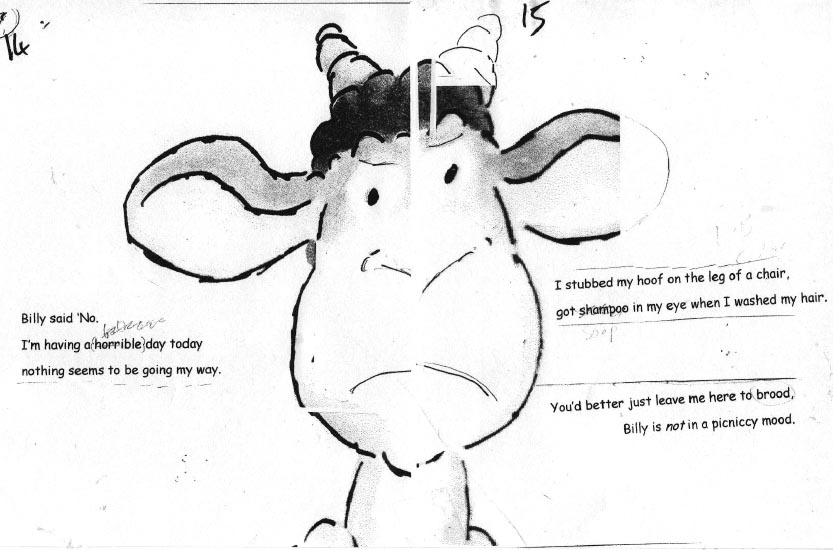MY BLOGS
Nat Blog
May 2011
My editor Sue and I have our first proper meeting on NAT THE CAT (since June last year I have been busy painting the artwork for my new book Six Little Chicks and creating The CLUB). We read through the dummy together; after a half a year away from the project it's good to come back to it with fresh eyes.
The first thing which becomes clear to us is that the text needs some pruning. You have to be ruthless about cutting anything which is extraneous, even if you are cutting good lines which you have an attachment to. For example, there is a song which Nat sings at various stages throughout the story. I thought it was a repeat which serves a function because it underlines what’s happening in the story and builds to a resolution when it’s sung at the end. Sue feels the song is slowing down the telling of the story and in a way I’m happy to hear this because I have a gut feeling that the text is too long and wordy. Cutting the song where it appears earlier in the text proves to be the answer – not only does the story suddenly flow much better but the song also has much more of a punch when it does appear at the end. Sue wonders whether each book in the series should contain a song and I suddenly have a mental image of Nat as a little troubadour with a guitar slung over his back. This would be an interesting look for Nat – we’ll see whether this idea survives the test of time.
With the text we are also checking all the words for child-friendliness – if we can’t imagine a child saying the word, we search for a more suitable alternative. For example, in one of Billy’s lines we change the adult word ‘bothersome’ to the more childlike ‘horrible’.
‘I’m having a bothersome day today
nothing seems to be going my way.’
The replacement word must always have the required amount of syllables (in this case three) to keep the rhythm going. I check this rhythm by reading the line while clapping out the beats with my hands.
 As Sue and I leaf through the dummy we also check the layout of the pictures, improving them as we go. For example, the sketch of Billy Goat being grumpy shows him in the centre of the spread – this can be a problem because when printed as some of it may be lost in the gutter (where the pages are sown together) and this could distort the face.
As Sue and I leaf through the dummy we also check the layout of the pictures, improving them as we go. For example, the sketch of Billy Goat being grumpy shows him in the centre of the spread – this can be a problem because when printed as some of it may be lost in the gutter (where the pages are sown together) and this could distort the face.
 I scribble out an alternative – it’s amazing how in just a few quick strokes you can summarise a whole page design and get a good feel for whether its working or not (even if it doesn’t look much like a goat!)
I scribble out an alternative – it’s amazing how in just a few quick strokes you can summarise a whole page design and get a good feel for whether its working or not (even if it doesn’t look much like a goat!)
NEW ON THE SITE
HAVE YOU SEEN?



























